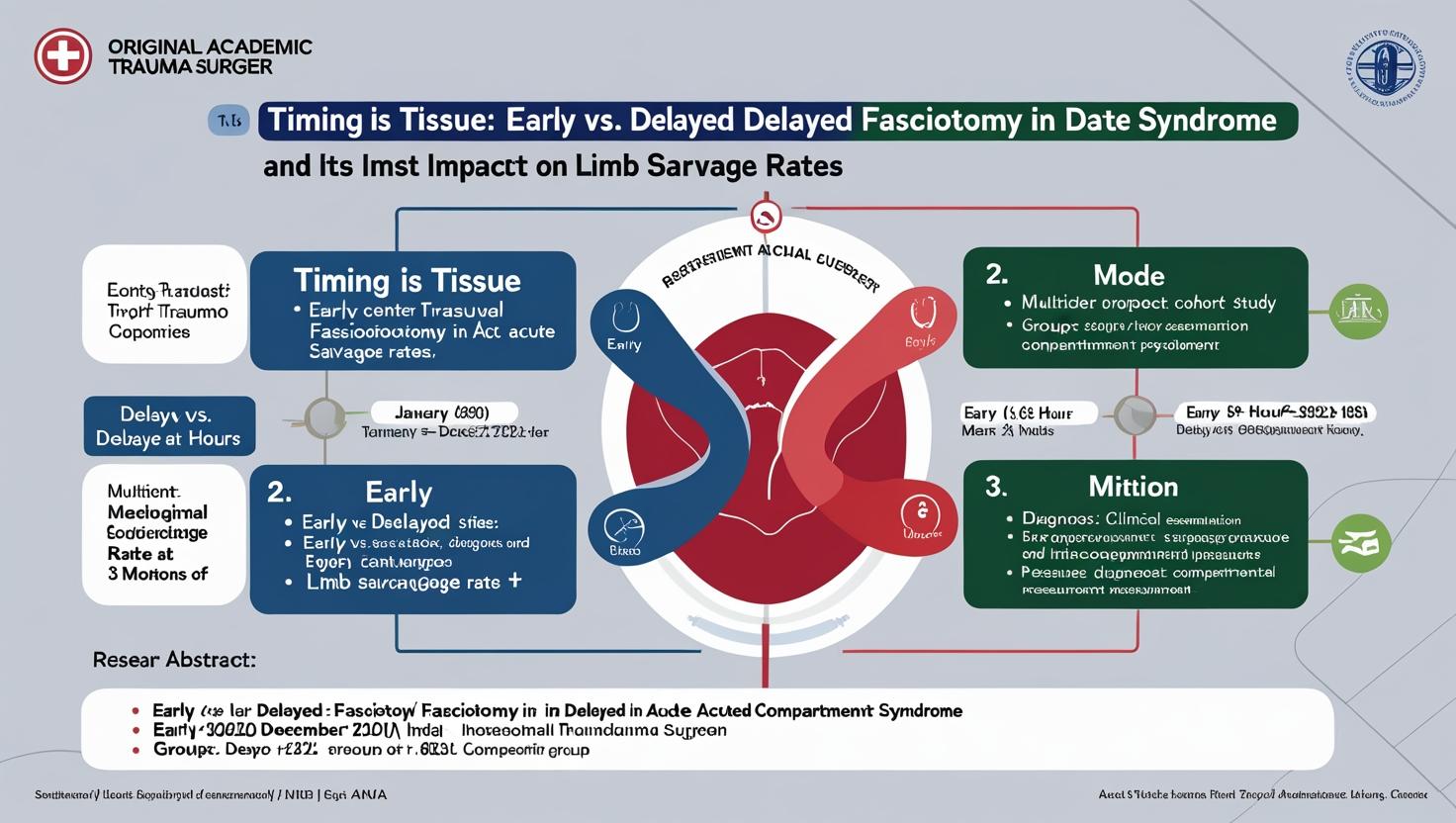Timing is Tissue: Early vs. Delayed Fasciotomy in Acute Compartment Syndrome and Its Impact on Limb Salvage Rates
Andreas Georgiou¹, Dimitris Alexiou², Eleni Kosta³, Felix Wagner⁴
Keywords:
Acute Compartment Syndrome, Fasciotomy, Limb Salvage, Orthopedic Trauma, Surgical TimingAbstract
Background:
Acute compartment syndrome (ACS) is a surgical emergency where delayed decompression can lead to irreversible tissue damage, limb loss, and even death. The optimal timing for fasciotomy remains debated in resource-variable settings.
Objective:
To compare limb salvage rates, functional outcomes, and complication profiles between early (<6 hours) and delayed (>6 hours) fasciotomy in patients with ACS.
Methods:
A multicenter retrospective cohort study was conducted in four tertiary trauma centers in India from January 2020 to December 2023. A total of 312 patients (mean age 34.8 years; 72% male) with ACS confirmed by clinical and intracompartmental pressure measurement were included. Patients were grouped into early (n=186) and delayed (n=126) fasciotomy cohorts. Primary outcome was limb salvage rate at 3 months. Secondary outcomes included infection rates, reoperation rates, and functional recovery (Lower Extremity Functional Scale, LEFS).
Results:
Limb salvage rate was significantly higher in the early fasciotomy group (96.2%) compared to the delayed group (78.6%) (p < 0.001). Mean LEFS score at 3 months was higher in the early group (71.4 ± 6.3 vs. 58.9 ± 7.1, p < 0.001). Delayed fasciotomy was associated with a higher incidence of wound infection (22.2% vs. 10.8%, p = 0.01) and increased need for secondary reconstructive procedures.
Conclusion:
Early fasciotomy within 6 hours of ACS diagnosis significantly improves limb salvage and functional outcomes while reducing postoperative complications. Delays beyond this window markedly increase the risk of amputation and long-term disability.
Downloads





